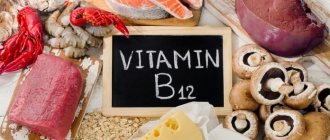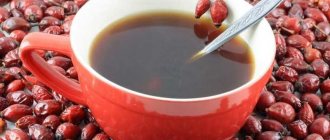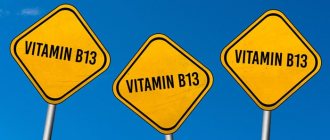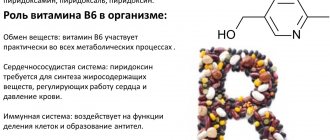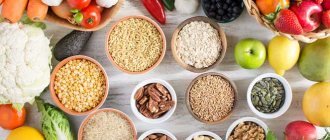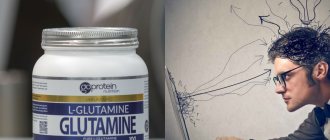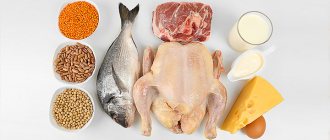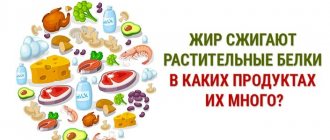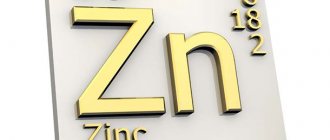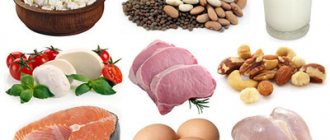In the human body, larger amounts of Zinc (Zn) are found in muscles, liver, prostate gland, hair, nail plates and skin.
With the help of this microelement (which foods contain a lot of zinc are shown in the table below), male hormones are fully produced, vitamin E is metabolized, which normalizes the functioning of the prostate gland.
It promotes the synthesis of insulin, testosterone, growth hormone, the breakdown of alcohol and improved memory.
Zinc is involved in the breakdown of proteins, carbohydrates, fats and nucleic acid. It is one of the main elements that forms the skeleton, regulates the growth and proper development of the body, and is involved in hematopoiesis. Its strengthening, antiviral and antioxidant properties restore the immune system, fight various infections and cleanse the body of harmful substances. Zn makes it possible to have full sense of taste and smell.
Wheat germ
Zinc is found in all cells of the human body, so it is necessary to constantly replenish its reserves. The daily intake of the mineral varies depending on the state of health and age, amounting to about 8-15 mg, for children under 13 years old - 2-8 mg. The record holder in the list of food products containing large amounts of zinc is wheat germ, 100 g of which contains 17 mg of the trace element.
Sprouted wheat is sold in health food departments, but you can sprout it yourself in ordinary dishes or special seed germinators. Nutritious grains are added to salads, cereals, soups and any other dishes. For example, you can grind them in a blender and then add them to minced meatballs, pie filling or bread. Wheat cakes, which are so valued by naturopaths, are very tasty and healthy.
If you don’t have time to think through the menu, then buy wheat germ oil and season your salads with it.
Daily requirement for a child, woman and man
In the seventies of the last century, the daily dose of zinc was determined.
For women it is 12 mg, and for men – 15 mg. Children's norm is 5-10 mg. But some modern doctors argue that this is not enough and the official dosage needs to be increased by 2-3 times. Unfortunately, most of the population does not even receive the stated doses. An enhanced zinc diet is necessary for pregnant and lactating women, athletes and people who are engaged in heavy physical labor or experience high psychological stress. Vegetarians suffer most from its deficiency; they need to take vitamins containing zinc. Only a doctor should prescribe the dosage.
Zinc is vital for athletes, as it is able to remove oxidation products from the body after physical activity. During regular training with a moderate load, the daily dose is 25-30 mg, and during competitions - 35-45 mg.
Cereals
Oatmeal is another food that is high in zinc. 100 g of oatmeal contains about 4 mg of mineral, and it can be prepared in different ways - with vegetables, fruits or berries. Rolled oats make delicious pancakes with carrots and apples, potato pancakes, honey bars with nuts and dried fruits, pies, cookies, crumble, puddings, soups, casseroles, muffins, bread and other baked goods.
Zinc takes an active part in the functioning of the immune system, fights harmful bacteria and viruses, participates in the production of one hundred enzymes in the body, and also improves the functioning of the sense of smell and taste buds. In addition, it normalizes vision and regulates blood sugar levels. However, oatmeal is also beneficial due to its fiber, which lowers cholesterol levels and takes care of the proper intestinal microflora.
Benefits of zinc
Zinc is part of 200 enzymes involved in cell division, metabolic reactions, and testosterone production. It is needed to neutralize carbon monoxide and carbon dioxide, eliminate inflammation.
The trace element helps form insulin in the pancreas. The substance reduces dangerous cholesterol levels and normalizes blood glucose concentrations.
Along with vitamins C and E, selenium, zinc has an antioxidant effect. It prevents the formation of free radicals that destroy cell membranes. Thanks to these properties, the mineral slows down the aging process of the body in environmentally unfavorable conditions.
Oysters
A gourmet delicacy, oysters are also incredibly rich in zinc - a 50g serving will provide you with 8.3mg of this important health mineral. Zinc takes part in the absorption of proteins, fats and carbohydrates, activates metabolism, and since 80% of zinc accumulates in muscles and bones, oysters are especially recommended for athletes and anyone recovering from injuries. In addition, oysters are a valuable source of vitamin C, B12 and protein.
Usually, oysters are sprinkled with lemon juice before serving - this is the best way to get the necessary nutrients and appreciate the taste of a natural product with a high zinc content. But oysters with mushrooms are even more delicious - this combination is especially successful, especially if you cook them with champignons and white wine, with porcini mushrooms in milk or cheese sauce, and add them to salads and soups. By the way, the juiciest and most delicious oysters are in winter, and in the cold they are sweeter than at other times of the year.
Video dessert
In this video, they will tell you what important role zinc plays for the body.
The recommended dose of zinc is 15 mg per day. But even with sufficient intake of the mineral into our body, no more than 2/3 of this dose is retained, since zinc is released through the sweat glands. That is why it is important to include foods containing this micronutrient in your diet.
Failure to consume enough zinc can result in a weakened immune system, loss of appetite, hair loss, skin and eye damage, diarrhea and, for children, stunted growth. On the other hand, consuming too much zinc alters the absorption of iron and zinc, which can lead to an increase in toxic free radicals in the body.
Here are 10 foods high in zinc.
1. Dried watermelon seeds. This zinc-rich product is loved in Asia and the Middle East. In 100 gr. Watermelon seeds contain about 70% of the daily dose of this mineral.
2. Cocoa powder and chocolate. Good news for those who love chocolate! 100g of chocolate contains approximately 10 mg of zinc, which corresponds to 65% of the recommended daily intake of this mineral. But we should not forget about the calorie content of this product. If you decide to lose weight, chocolate is not for you. For its part, 100 g of cocoa powder contains about 40% of the required daily dose of zinc in the body.
3. Lamb: 100 grams of this meat contains up to 58% of the zinc you need per day. 4. Beef (lean) - 100 grams contains up to 70% of the recommended daily dose. 5. Oysters are known as an aphrodisiac and are also famous for their high zinc content. Depending on the type of oyster, 100g contains from 100 to 1000% of the daily dose of zinc.
The human body is a complex device that requires almost the entire periodic table for normal functioning. The body can synthesize many substances on its own, but there are also those that must be obtained from food. Let's look at where zinc is found, which plays a vital role in human metabolism.
Zinc deficiency
Zinc is a very important substance, and its deficiency immediately affects human health. First of all, immunity and reproductive function are affected, and wound healing will also be complicated. A lack of zinc in childhood is especially dangerous: it can cause stunted growth and puberty. In some cases, this even affects taste and smell.
In addition, it is believed that zinc inhibits the aging process, which means that its lack will accelerate it. That is why it is especially important for women to monitor the balance of this substance. Systematizing the above, we can note the following negative consequences of zinc deficiency:
- frequent infections;
- focal hair loss;
- growth retardation in children;
- irritability and memory loss;
- late puberty;
- loss of appetite, taste and smell;
- impotence in men;
- infertility in women;
- impaired absorption of vitamins A, C and E;
- brittle nails;
- poor wound healing;
- the appearance of acne;
- increased cholesterol levels.
A clear external sign of a lack of zinc in the body is the appearance of white spots on the nails. If you notice them, you may need to be more careful about your diet.
Excess zinc
Keep in mind that you always run the risk of overdoing it if you go too heavy on zinc. There is a possibility of harming your health if you take too many drugs (of course, you are unlikely to overdose if you consume foods rich in zinc). Due to the excess, general poisoning of the body is possible, the inability to absorb nutrients in the intestines and a deficiency of other minerals.
Products containing zinc
Let's look at what zinc contains in order to be able to obtain it in a natural way, without the use of drugs and dietary supplements. In its natural form, it is absorbed much better and does not threaten the body in any way. First of all, it can be found in products of these 5 groups (the first contains the most zinc, the last contains it in small quantities).
Seeds and nuts
Seeds and nuts are the best natural source of zinc. Add them to salads, use them as a snack, and you won't suffer from zinc deficiency. Especially notable in this row are sesame seeds, pumpkin seeds and sunflower seeds, as well as pine nuts and peanuts.
Lean protein foods
Do you like organ meats? They contain a lot of useful substances. There is a lot of zinc in beef tongue, veal, chicken hearts, and turkey. Fatty meat products contain little zinc.
Cereals and more
This group contains different products - wholemeal flour, yeast, and egg yolk. They are united by an average zinc content.
Legumes
Plant protein is an excellent source of zinc! Any legume, be it peas or lentils, always contains quite a lot of this valuable substance. By the way, this group includes peanut butter, walnuts and coconut - they do not contain as much zinc as the products of the second group.
Fish
A sardine lover will never suffer from a zinc deficiency, nor will anyone who regularly eats tuna or salmon. These foods contain little zinc, but consuming them regularly will still save you from deficiency.
Choose your favorite products from this list and replenish your zinc reserves with pleasure!
The health and vigor of the human body constantly depends on the quality and quantity of food consumed. Only through food can a person receive all the most important elements that are responsible for the existence and normal functioning of the body as a whole. It's no secret that almost the entire periodic table is present in the body. One of these elements is zinc.
Sesame
The ancient Egyptians highly valued sesame seeds and used them to treat a variety of diseases. If you are looking for foods that contain zinc, you should pay attention to sesame, which contains 7.8 mg of zinc per 100 g. Thanks to zinc, these seeds have a beneficial effect on hormonal levels, facilitating the onset of menstruation in women and the production of testosterone in men, which is especially valuable for adolescents during puberty. In adulthood, a lack of zinc in the body leads to prostatitis and impotence, so products containing zinc are very useful for men.
Lightly roasted sesame seeds are a subtle seasoning that brightens the dish and reveals all the shades of its taste. You can add the aromatic seeds to the dough, sprinkle them on puff pastries, bagels and bagels, roll rolls in them, and what delicious halva and kozinaki can be made from sesame! In addition, sesame seeds serve as a breading for meat, fish, cheese and vegetables, making them crispy and appetizing.
Zinc deficiency in the body:
There are many reasons why a deficiency of this microelement may occur in the body. Zinc deficiency can be caused by diseases of the thyroid gland, liver, digestive tract, cancer, as well as a lack of this trace element in food and water. The absorption of zinc significantly worsens when taking calcium supplements, and with the abuse of alcohol and coffee, its excretion from the body increases. The level of zinc in the body decreases when taking contraceptives and certain medications that contain corticosteroids. With age, the amount of zinc in the body also decreases, so it is believed that all older people are deficient to varying degrees.
Zinc deficiency negatively affects a wide variety of tissues and organs of our body. Its symptoms may be:
- skin changes (various rashes near natural openings and on the extremities, deterioration in the healing of scratches, abrasions and other skin defects, dry skin);
- changes in hair (local loss, appearance of a reddish tint or decreased pigmentation) and striations of nails (transverse white stripes);
- eye damage (swelling of the cornea, sometimes leading to clouding, inflammation of the conjunctiva, cataracts);
- changes in the perception of tastes and smells; loss of appetite;
- neurological disorders (trembling of the limbs, changes in gait and speech, dementia, decreased attention and learning ability);
- behavioral disorders (unreasonable irritability, low mood, drowsiness);
- prolonged or premature labor, atonic bleeding during childbirth; cessation or delay of growth and puberty in children;
- long-healing ulcers on the mucous membranes; tendency to frequent infectious diseases;
- impotence;
- infertility.
A lack of zinc in the human body makes the normal functioning of the reproductive and immune systems impossible. Without zinc, blood formation and healing processes cannot take place. For children, zinc deficiency can have a negative impact on normal growth, puberty, taste and smell.
A lack of zinc in the body may be indicated by diarrhea, apathy, and signs of neuropsychiatric disorders (confusion of thoughts, irritability, depression, trembling of fingers, loss of coordination of movements). With a more serious zinc deficiency (blood plasma content less than 3 µmol/l), inflammatory processes in the oral mucosa and changes in the skin of the face (especially in the mouth) and extremities develop.
This is why it is so important to know which foods contain zinc.
What foods rich in zinc can we recommend to our readers?
Food sources of zinc are mainly animal products. However, they are also found among plant products, but they have a significant disadvantage - the zinc from their composition is less absorbed. From this we can conclude that a diet that includes only plant products will not be rich in this chemical element.
Wheat and rice bran
It is difficult to imagine that once upon a time bran was fed exclusively to domestic animals. Now fans of healthy eating have appreciated the benefits of bran, which is the shell of the top layer of grains. They improve digestion, gently and effectively cleanse the intestines of toxins, normalize the functioning of the liver and pancreas, but most importantly, they contain a high concentration of zinc. 100 g of wheat bran contains 7.2 mg of zinc, and 100 g of rice bran contains 6 mg. They occupy one of the first positions in terms of zinc content in food products.
Zinc is involved in the production of serotonin, so if you add bran to bread and pancake dough, porridge, stuffing, minced meatballs and breading, you will notice that nervous overload and stress are much easier to bear. Make Viennese waffles or carrot bran cakes to make life even more wonderful!
Pumpkin seeds
What other foods contain zinc? 100 g of pumpkin seeds contain 7.8 mg of this microelement, and when fried, its concentration does not decrease much. Pumpkin seeds are rich in antioxidants that prolong youth and beauty, and they owe these properties to zinc. With a lack of the mineral, the brain is deprived of nutrition, so memory deteriorates, and senile dementia develops in old age. Once you add zinc to your diet, your memory clears up.
Pumpkin seeds can not only be fried in a frying pan, but also dried in the oven until they become golden brown. They are used to decorate salads, soups, cereals, casseroles, baked goods, sweet pastries and fruit desserts. Pumpkin seeds are also used to make vegan candy and raw cheese.
Causes and consequences of excess zinc
The factors leading to oversaturation of the body with zinc are:
- exchange failures;
- excessive intake of this microelement with water and food;
- uncontrolled, prolonged consumption of zinc-containing drugs (including zinc ointments intended for local treatment of lesions);
- living in environmentally unfavorable regions;
- frequent contact with zinc and its compounds in production (work in unfavorable conditions).
An excess of zinc, just like a deficiency of this substance, can provoke the development of a number of pathological processes. The most common of them are:
- dysfunction of the immune system;
- the occurrence of autoimmune processes;
- deterioration of the condition of hair, skin, nails;
- stomach ache;
- nausea, vomiting;
- formation of copper, cadmium and iron deficiency in the body;
- development of disturbances in the functioning of the pancreas, prostate gland, and liver.
Identification of symptoms indicating the formation of a deficiency or excess of zinc is the basis for taking urgent measures aimed at normalizing its concentration in the body (following a diet, stopping the use of zinc-containing medications, alcohol, etc.). If there is no effect from self-medication, it is necessary to consult a doctor as soon as possible and undergo the course of treatment prescribed by him.
05 August 2014 525
Beans and lentils
Legumes rich in zinc include small red adzuki beans, popular in Japan (containing 5 mg of the mineral), soybeans (4.8 mg) and lentils (4.7 mg). In adulthood, legumes should be eaten more often, since the zinc they contain strengthens blood capillaries, protecting against heart attack and stroke. Beans and lentils go well with vegetables, meat, and mushrooms, although bean pate with prunes is so tasty that even adherents of gastronomic conservatism find it difficult to resist. The most popular legume dishes are lentil soup, lobio, bean cutlets, bean and potato stew, mashed potatoes and lentil pancakes.
As for soy products, in reasonable doses they are useful because they contain isoflavonoids that stop the growth of hormone-dependent forms of cancer. In addition, it is a complete protein, not inferior in nutritional value to proteins of animal origin, so vegetarians cannot do without soy. Now there is such a variety of soy products in stores that it will not be difficult for you to think of a complete diet with soy curd, milk, yogurt, mayonnaise, sauce, goulash and schnitzel. In other words, if you remember which product contains zinc, do not discount soy; besides, fried tofu cheese, soy cutlets, miso soup, and soy curd cheesecakes do not need advertising!
Which foods contain the most zinc?
Products rich in zinc should be present in the daily diet of every person. For men, foods rich in zinc are necessary for the production of testosterone and the full functioning of the male genital organs. Products containing zinc are no less important for pregnant women, as it is a necessary element for a healthy pregnancy. Well, foods containing zinc are important for children for bone formation. That is why it is important for all people to know where zinc is found most.
The foods richest in zinc are primarily seafood, meat and poultry. The maximum amount of zinc is contained in oysters: 25 milligrams per 10 grams of product. A lot of this microelement is also found in soy and cheese. Beets, raspberries, garlic, ginger, pumpkin seeds, oranges and tomatoes are plant foods that contain zinc. Don't forget about grain products containing zinc. Some zinc-rich foods include corn, legumes, wheat bran, and wheat germ.
In order for an adult to receive the daily requirement of zinc, it is enough to eat the following foods containing zinc: 6 oysters, 145 grams of pumpkin seeds or 125 grams of calf liver.
During active sports, foods rich in zinc are not enough for a person. Take dietary supplements to replenish zinc deficiency. But still remember that foods rich in zinc should still be present in your daily diet to ensure normal functioning of the body.
Shiitake mushrooms
The famous shiitake mushrooms, with a zinc content of 7.6 mg per 100 g of dried mushrooms, began to be eaten as early as the 2nd century BC. e. They are useful for tuberculosis, bronchitis, skin diseases, hypertension, atherosclerosis, chronic fatigue and apathy. According to Japanese healers, these mushrooms fill the body with energy and prolong life. Largely thanks to zinc, which not only gives good health, but also affects appearance, making the skin clean and soft, and hair strong and silky.
Shiitake mushrooms can be boiled, fried, stewed, dried and frozen. There are many cooking recipes, just have time to choose. Very tasty are pork or chicken with vegetables and shiitake, egg and mushroom soup, vegetable salads with shiitake, as well as tempura, sauté and traditional Japanese dishes, such as yesenabe-shiru (hodgepodge), japchae (mixed vegetables) and nagi-yanagawa (soup with smoked eel).
What foods contain zinc?
Zinc enters the human body with food. Moreover, the richest sources of this substance are
:
- oysters;
- lobster meat;
- lamb, beef;
- liver.
In addition, zinc is found in high concentrations in fish, dairy products, wheat, sesame and poppy seeds, nuts, sunflower and pumpkin seeds, and some vegetables and fruits. More detailed data on the content of this substance in food are given in the table.
| Product names | Zinc content (mg per 100 g) |
| up to 40 | |
| Pumpkin seeds | 10 |
| Yeast | 9,9 |
| Boiled chicken heart | 7,2 |
| Sesame seeds | 7 |
| Cocoa powder | 7 |
| Beef meat | 5,5 |
| Sunflower seeds | 5,2 |
| Boiled beef tongue | 4,6 |
| Lentils | 4,8 |
| Mutton | 4,5 |
| Pine nuts | 4,4 |
| Beef liver | 4,2 |
| Peanut | 4,1 |
| Turkey | 4,1 |
| Oats | 4 |
| Hard cheeses | 3,9 |
| Wheat | 3,5 |
| Almond | 3,1 |
| Walnuts | 3,1 |
| Soya beans | 2,9 |
| Rye | 2,7 |
| Chocolate | 2,4 |
| Chicken | 2,2 |
| Pork | 2,1 |
| Coconut | 2 |
| Anchovies | 1,8 |
| Octopus | 1,7 |
| Carp | 1,5 |
| Beans | 1,4 |
| Sardines | 1,4 |
| Peas | 1,3 |
| Bread | about 1.2 |
| Chocolate candies | 1,2 |
| Minced fish cutlets | 1,1 |
| Caviar | 1,1 |
| Eggs | 1,1 |
| Salad | 1,1 |
| Herring | 1 |
| Tuna | 0,9 |
| Rice | 0,9 |
| Salmon | 0,9 |
| Yogurt | 0,8 |
| Cookies about | 0,7 |
| Dried apricots | 0,7 |
| Boiled mushrooms | 0,7 |
| Ice cream | 0,7 |
| Spinach | 0,7 |
| Boiled unpolished rice | 0,7 |
| Corn | 0,6 |
| Dates | 0,5 |
| Boiled vermicelli | 0,5 |
| Raspberries | 0,5 |
| Oatmeal porridge | 0,4 |
| Prunes | 0,4 |
| Milk | 0,4 |
| Broccoli | 0,4 |
| Olive oil | 0,3 |
| Potato | 0,3 |
| Avocado | 0,3 |
| Beet | 0,3 |
| Black currant | 0,2 |
| Radish | 0,2 |
| Figs | 0,2 |
| Honey | 0,2 |
| Bananas | 0,2 |
| Oranges | 0,1 |
Nuts
Pregnant women have a much higher need for zinc, and they also need omega-3 and omega-6 fatty acids, which means they should eat nuts more often. Let's talk about which nuts contain a lot of zinc. The record holders in this category are cashews, pine nuts and Brazil nuts. Pine nuts supply the body with vitamin E and arginine, which normalize the functioning of the nervous system and burn fat. Cashews are an essential source of iron, and Brazil nuts contain valuable selenium that supports health during pregnancy and reduces the risk of miscarriage. But the main thing that nuts have in common is zinc, which maintains the necessary balance of hormones and protects the embryo from intrauterine infection.
It is better to eat nuts raw, although cashews, even when fried, do not lose their beneficial properties regarding zinc activity. Nuts are also added to vegetable and fruit salads, baked goods and sweets, and nut milk, pies and candies are made from them. And how good is fish with nut sauce, beef and poultry with nuts, cheese and nut snacks and other delicacies. And simply eating nuts and dried fruits is an exquisite pleasure!
Unfortunately, vegetables and fruits are not particularly rich in zinc, so you shouldn’t rely on them. You already know which foods contain zinc. If you use spices, add basil, thyme, mustard seeds and celery seeds to your dishes - they contain plenty of zinc!
Let your diet be rich in vitamins, tasty, and let the choice of dishes and the joy of new culinary discoveries always lift your spirits and improve your health!
The human body's need for zinc
The daily requirement of the human body for zinc is:
- infants – 3–4 mg;
- children under 3 years of age – up to 5 mg;
- preschoolers – about 8 mg;
- schoolchildren 7–11 years old – 10 mg;
- adolescents 12–18 years old – 12 mg;
- adult women and men, elderly people – 15–20 mg.
Zinc is a substance necessary for normal intrauterine development and fetal growth, so during pregnancy women experience a higher need for this microelement. In particular, the daily intake of this substance increases by 0.6–1 mg. In addition, the need for zinc increases significantly during periods of active sports.
